In a tomb at Saqquara, Egypt In 1898, a peculiar wooden object six inches long was found that dated back to about 200 BC. The object had a body resembling a fuselage, and a seven inch wing span that curved downward slightly. It also had a fixed rudder, and a tail.
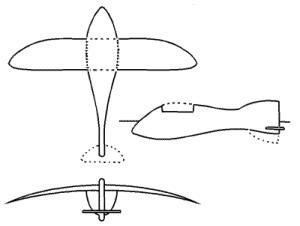
For all intents and purposes the object looked very much like a modern airplane or glider. However the artefact was labelled a model bird at the Cairo Museum in 1898 because aeroplanes had not been invented yet by modern day man.
Years later Dr. Khalil Messiha, an authority on ancient models, studied the object. Khalil claims it has characteristics of very advanced aerodynamics, similar to modern gliders that require very little power to stay airborne. The curved wings are commonly termed today as reverse dihedral wings, which can attain great amounts of lift. A similar design was employed on the supersonic Concorde aircraft.

Though many people still hold to the opinion that this artefact is a model bird, Khalil noted several significant differences between this artefact and common Egyptian bird models, least of which the rear tail stabiliser. No birds with vertical tails were ever seen in Egypt or the middle East.
Central and South American Model
This gold trinket, and others like it, dating between 500 and 800 AD, where discovered in Central America and along the coastal areas of South America. It closely resembles a model of the Space Shuttle or a delta wing fighter aircraft.
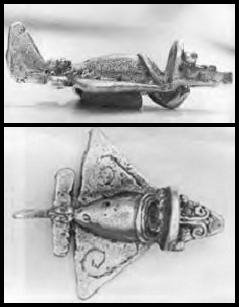
Labelled a Zoomorph, or animal-shaped object by it discoverers. It resembles no known flying animal to date. But there is no mistaking its distinctly mechanical appearance. Not only does it appear to have delta-shaped wings, stabilizer fins, and rudder, it also has what looks like a pilot's seat.

(Zoomorph on the left, Space Shuttle on the right)
Experts in aerodynamics, contend that the wings are too far back for the object's centre of gravity and that the nose is not aerodynamically sound. However you could easily argued that the front portion of the model is some form of frontal docking platform similar to the top docking method used by the space shuttle.
The image below shows the actual docking method used by the space shuttle to dock with the Mir space station.

Imagine how it might look if it docked via the nose. The image on the left is the space shuttle, and the one on the right is an example of the Zoomorph docked and undocked.
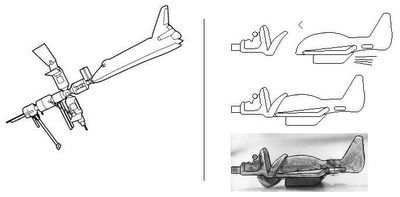
(Space Shuttle on the left, Zoomorph on the right)
Furthermore the theory of aerodynamics was questioned by three Germans, Algund Eenboom, Peter Belting and Conrad Lübbers, who decided to try and create a scale model of the “airplane”, to prove if it was indeed capable of flight.
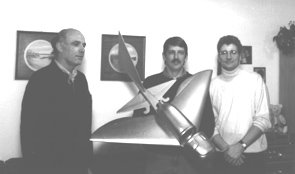
After comparing different models from that region and era, they soon realised that the people of South America were very capable of creating insect models that where anatomically accurate, and that this particular artefact was quite different.
Insects have their wings on top of the body, as was commonly modelled by the South American People. But this strange artefact had its wings positioned beneath the body. In fact most propeller driven planes also have their wings attached to the top of the body, and only modern jet planes have their wings positioned beneath the fuselage.
In 1996 They successfully managed to create a scale model of the artefact with a propeller added to the nose. The model, named “Goldflyer I”, could fly without difficulty, but as the artefact quite clearly did not have a propeller, they needed to prove their theory of jet propulsion also. After all if the artefact had had a propeller attached, it couldn’t possibly be compared to an insect.
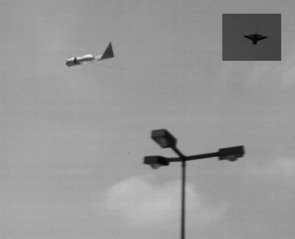
They went on to develop Goldflyer II. The model (depicted below) had the same dimensions as the artefact, and had a landing gear and jet engine attached at the rear of the fuselage. Most jet planes have the engines attached to the wings, and only the space shuttle has its engine positioned at the rear. However, the space shuttle is launched with rocket technology, that then detach from the craft. So they had to make a design that could take off without such a device.
The “Goldflyer II” flew perfectly and could take off, fly, perform looping manoeuvres in flight, and land without difficulty, proving not only the sound aerodynamics of the artefact, but that the use of an engine at the back of a plane could be perfectly achieved in modern aviation as well, if they wanted to.
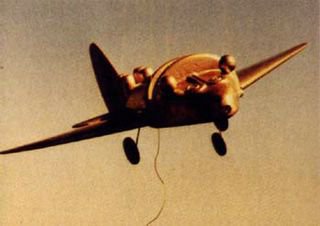
The Abydos Temple Glyphs
The images below are taken from The Adydos Temple south of Cairo in Egypt. These same images where filmed and confirmed by Fox Television in 1998 and broadcast in a show titled "Opening the Lost Tombs: Live From Egypt."
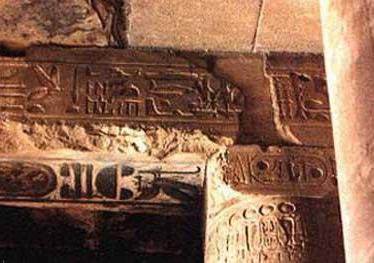
The 3000 years old glyphs depicted on the ceiling support have shocked and stunned many through their amazing likeness to modern day aircraft.
It is pertinent to note that there are touched up and doctored versions of these glyphs circling the internet, however the ones depicted here are genuine and unchanged. They where photographed in November 1992 by Bruce Rawless.
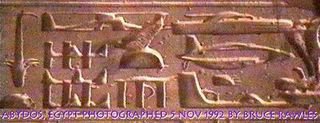
(close up)
The images below bare a striking resemblance to a helicopter;
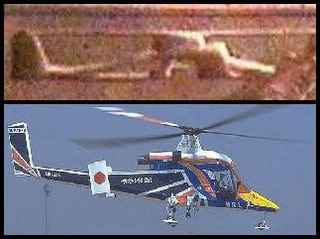
A tank;
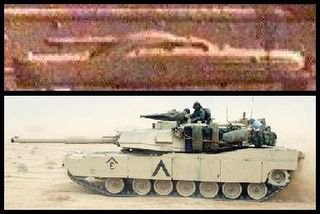
A Submarine or Airship;

and a hovercraft;
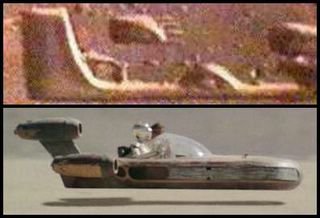
People have dismissed these astonishing images, saying that the plaster has fallen away and the glyphs have become damaged to appear like something they are not, yet the rest of the surrounding temple is in exceptional condition.
Surely if this was just the random crumbling of rock and plaster, the coincidence of them crumbling so perfectly to resemble these modern day machines, is a coincidence not easy to stomach.
Other scholars claim its a ‘palimpsest’, a manuscript that has been written on more than once. They claim that the original glyphs where not fully erased, and that the new glyphs placed over the original ones happen to form the images depicted above.
The image below shows the new and old glyphs in red and blue overlapping each other.
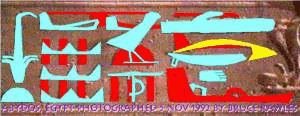
A translation of the glyphs reveals the following:
"It was decided in antiquity to replace the five-fold royal titulary of Seti I with that of his son and successor, Ramesses II. Who repulses the Nine Bows” or “Who protects Egypt and overthrows the foreign countries"
The term ‘Nine Bows’ refers to the ‘nine traditional enemies of Egypt’ so an alternate translation would read "Who repulses the Nine Enemies of Egypt".
Is this all just one amazing coincidence? Is this nothing more than crumbling plaster and ancient typing errors? Or is it evidence that the ancient Pharaohs had great machines of war to repel the nine enemies of Egypt?
No comments:
Post a Comment